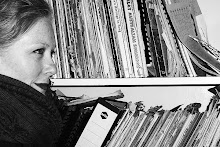This research is just creating longer lists of topics of interest! You cant explore the libraries of early Australia without also negotiating the social, political, cultural and historical backgrounds of early Australia. There are estimates that 90 per cent of people were illiterate. That the numerous mechanics institute libraries were expensive to join, had few members, and actually contained as little as one hundred items in their collections. That the early parliamentary libraries were largely irrelevant and mostly served to create a scholarly environment for the parliamentarians to sit in. The American and British library models were influential and humbling, reflecting the colonial, impressionable Australia which was yet to be a cohesive and planned nation. That the questions of relevance, accessibility, weeding and fulfilling the needs and demands of users are ongoing questions: the current debates and programs which strive to keep libraries relevant with new technologies are really very old questions. Its just that the materials have changed or increased in variety.
I’ve had a delicious couple of days: I searched the Swinburne library catalogue and took home 3 books, yes, real items by real historians/librarians/researchers. I’ve spent fascinated hours in bed, under the doona, in my p.j.s, had way too much coffee, and have read 2 of the books. This is my kind of research!
Australian Library History in Context edited by W. Boye Rayward, published in 1988 by the School of Librarianship, University of NSW.
Libraries in Australia by Norman Lynravn, first published in 1948 by Wadley and Ginn (By the end of page one the intro has included a Socrates quote, references to good and evil, how Jesus got his message across and the quest for knowledge: serious stuff that I can’t imagine being written today. It is fascinating, from another time)
Libraries in Australia by Peter Biskup, published by Centre for Informaton Studies, Wagga Wagga, in 1994. This is a weighty tome, with entire chapters each devoted to academic libraries, public libraries, school libraries, with a strong flavour of national overview.
The timeline idea in the previous blog was a good one: the State library has had 4 name changes and a number of location changes, and each author and online resource talks in a slightly different way. A timeline clarifies what happened when- otherwise I’m going to end up juggling indecipherable slabs of text.
I wish Id just borrowed these three books 5 weeks ago...
Mechanics Institutes
Parliamentary Libraries
Private Collections and Reading of the Nineteenth Century
Probably 90 per cent of the first settlers had not learnt to read. The remaining 10per cent brought books with them, and had them sent out after their arrival. Thhese private collecctions were the basis of Australian libraries.
In 1821 a catalogue of the contents of these private libraries was compiled.
1827 Aus Sub lib and Reading Room had a collection of1,000 books. History, biology, theology, science and travel were the main subject areas, as well as some English fiction. It cost 5 guineas to join, as well as an annual fee of 2 guineas.
In 1833 the Sydney Mechanics School of Arts library opened. This was the first of similar libraries , which were conceived of, originally in England, reflecting social change, as a means of self improvement by artists and workers. They were active throughout the 19th century, and for example, most libraries had a copy of the 1885 enc brit. By 1900 there were around 1,000 odf these types of libraries.
How many people read a certain text?
Value of literature/ worthiness
Contributing Personalities
Ralph Munn, director of Pittsburgh Public Library and ernest R. Pitt, principal Librarian of the Public Library of Victoria. Inspected over 100 libraries in 1934. Their report, The Munn-Pitt Report, said that libraries in Australia were among the most backward of Western countries. The National Library in Canberra had a little over100,000 items, and the State Library in ydney had less than half a million. If the survey had occurred at the beginning of the 20th century, the library framework of mechanics institutes and state libraries would have looked much the same. This report was the beginning of a new era in Australian libraries.
Subscribe to:
Post Comments (Atom)

No comments:
Post a Comment